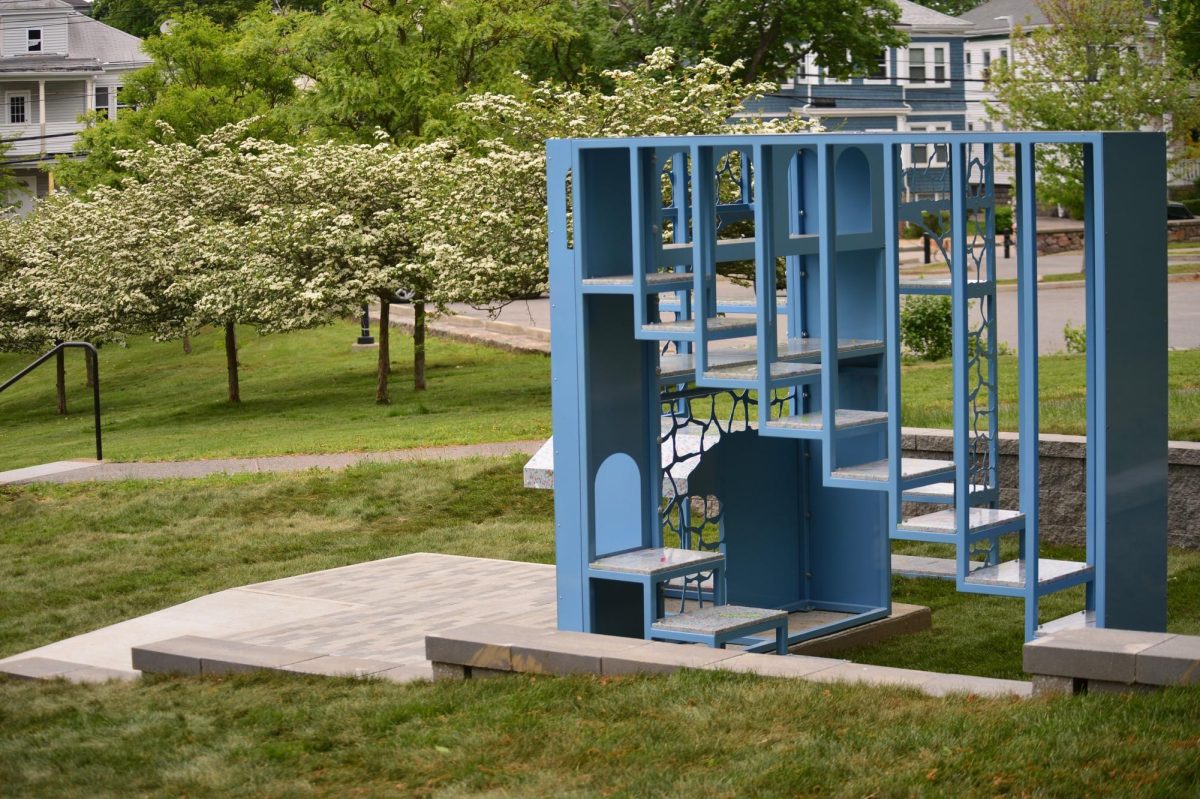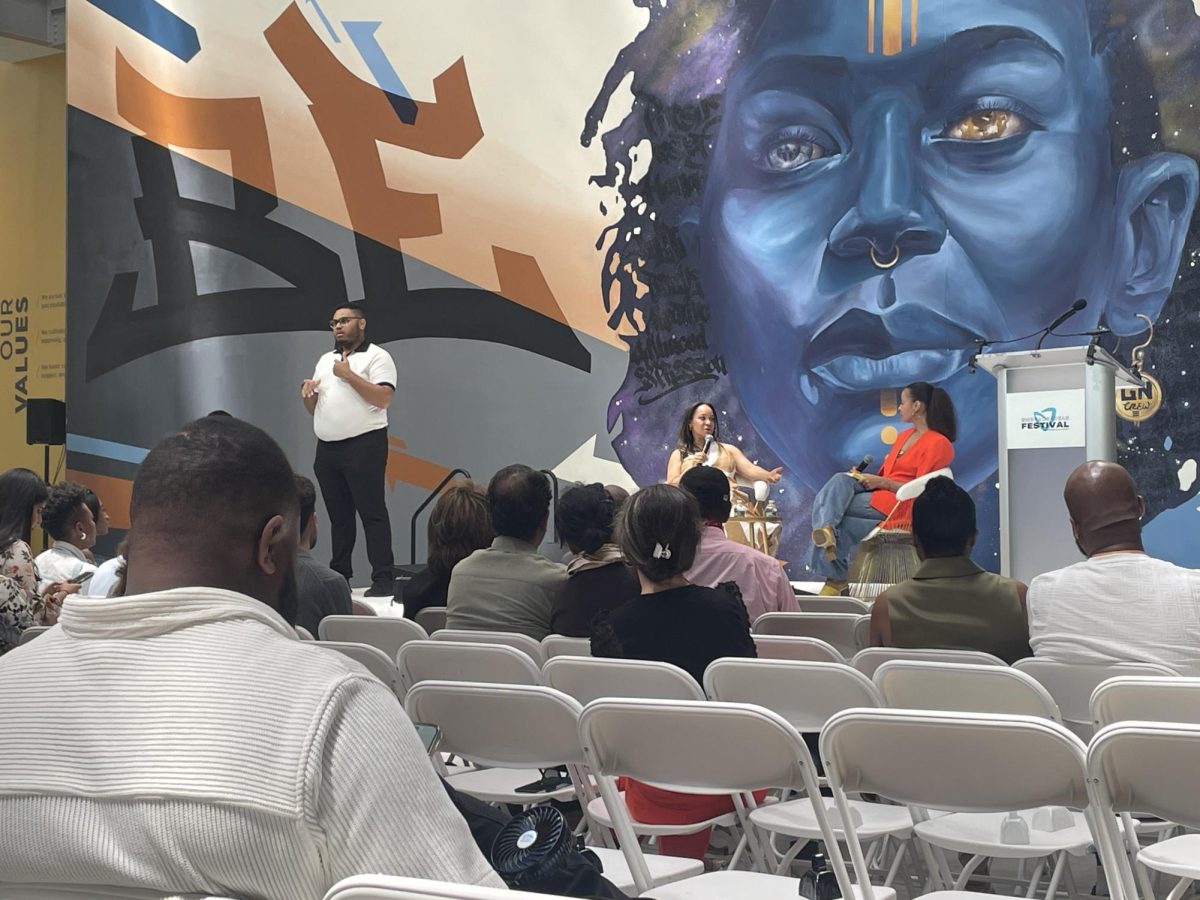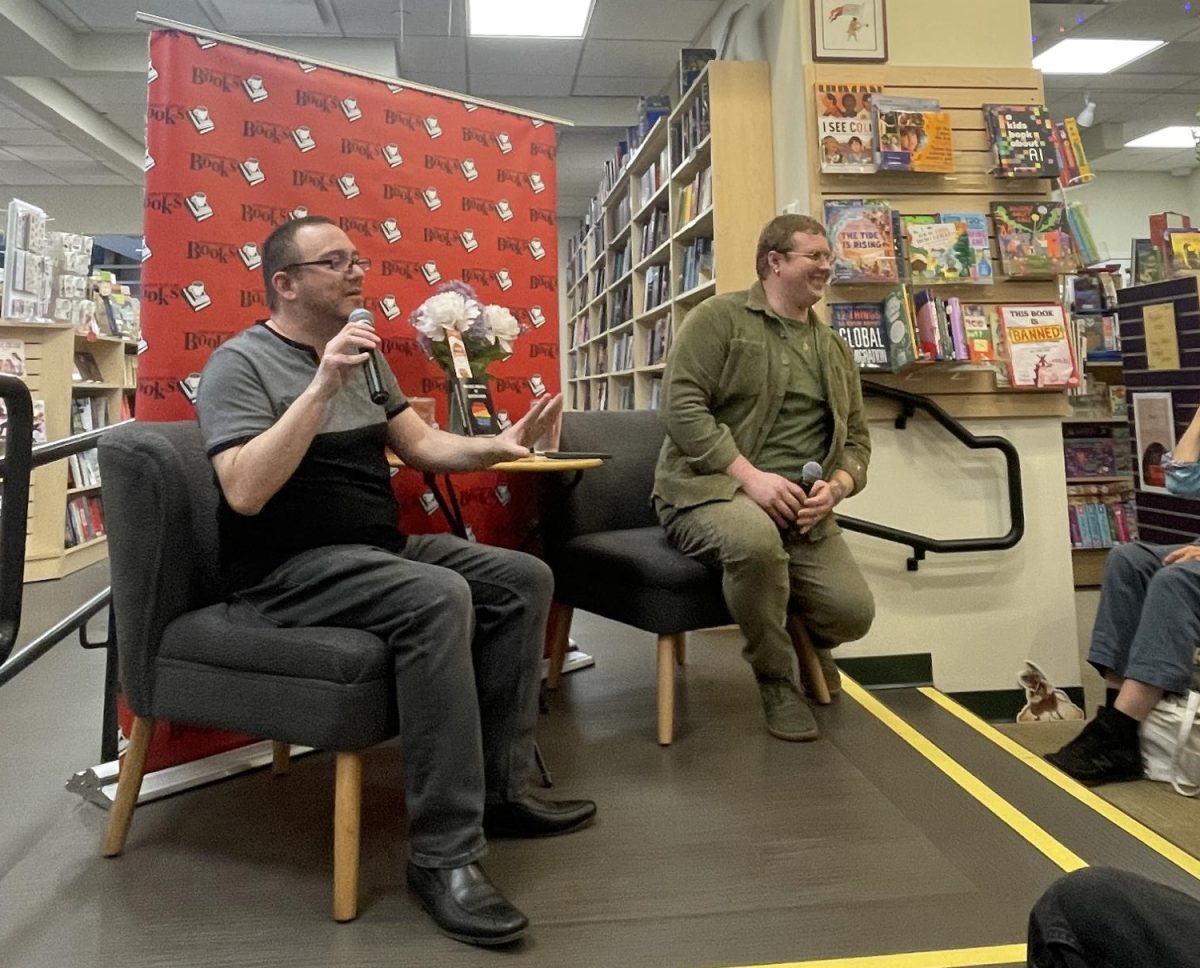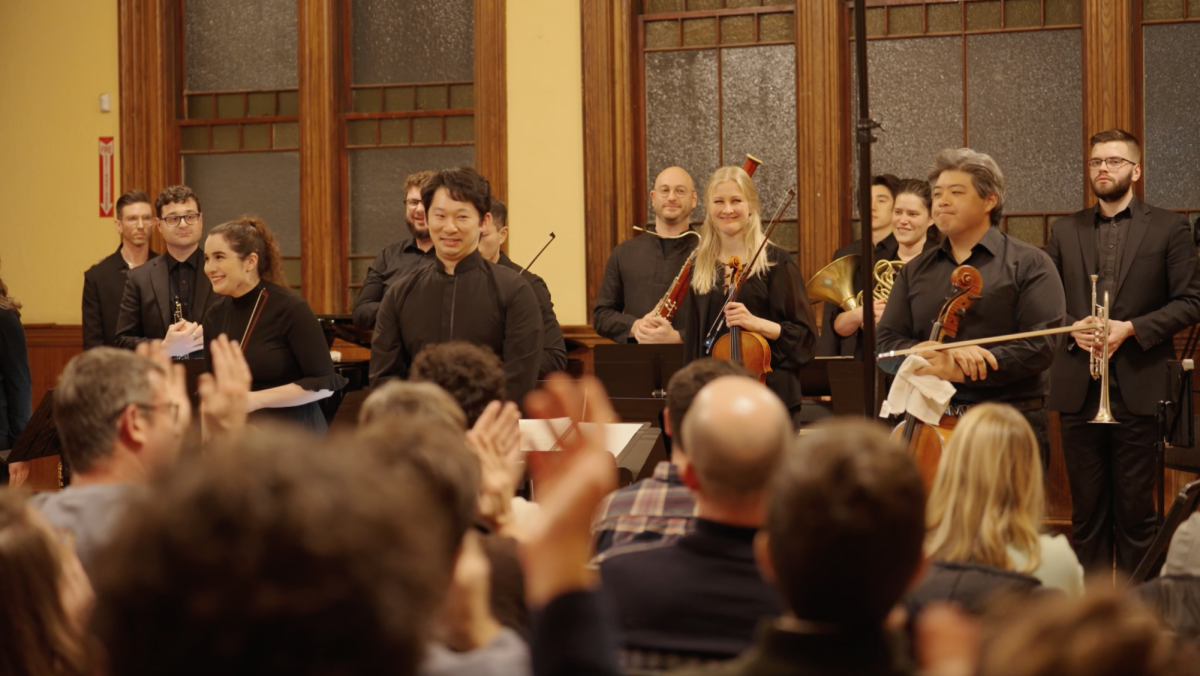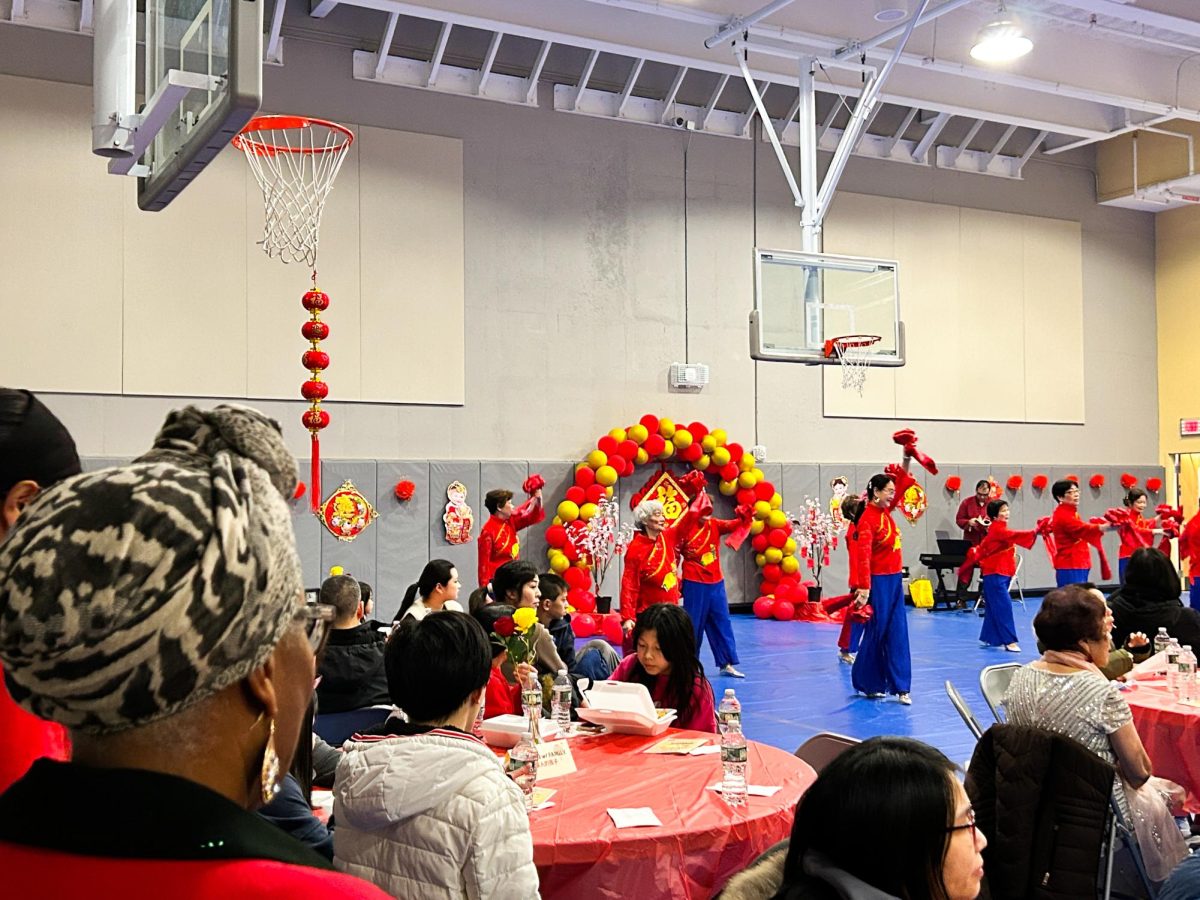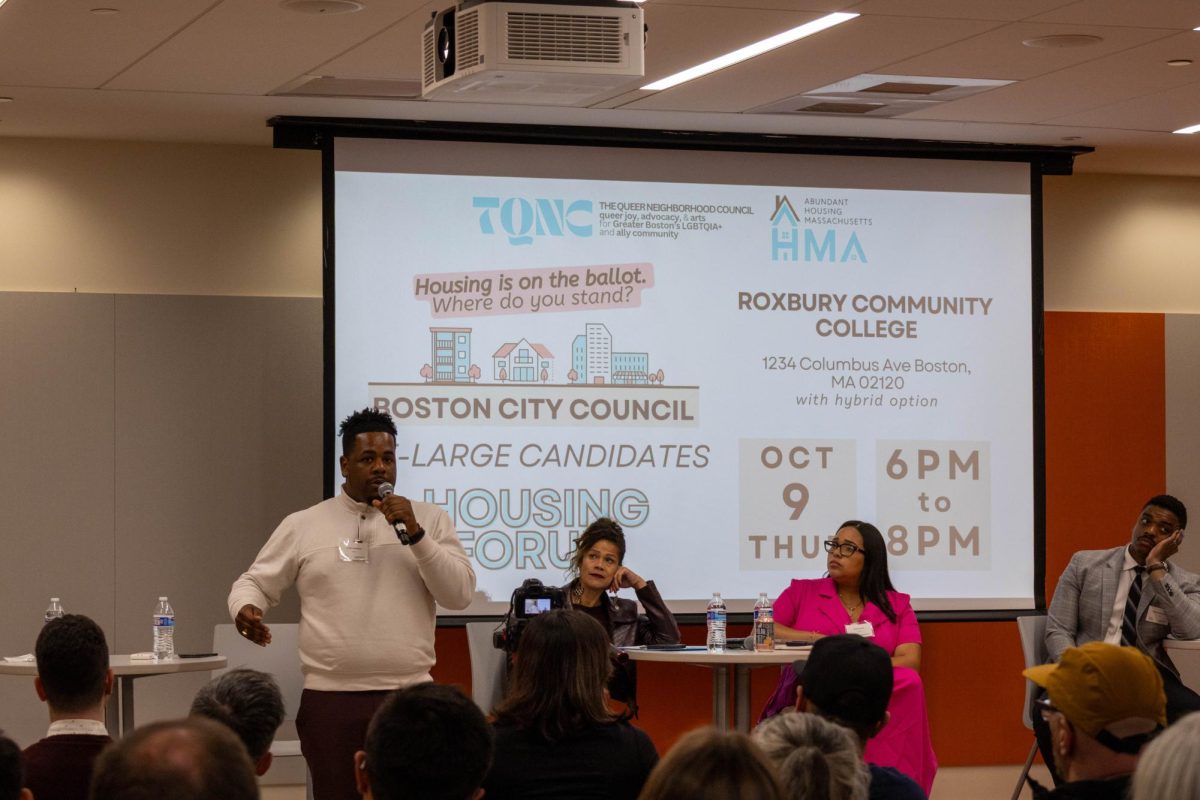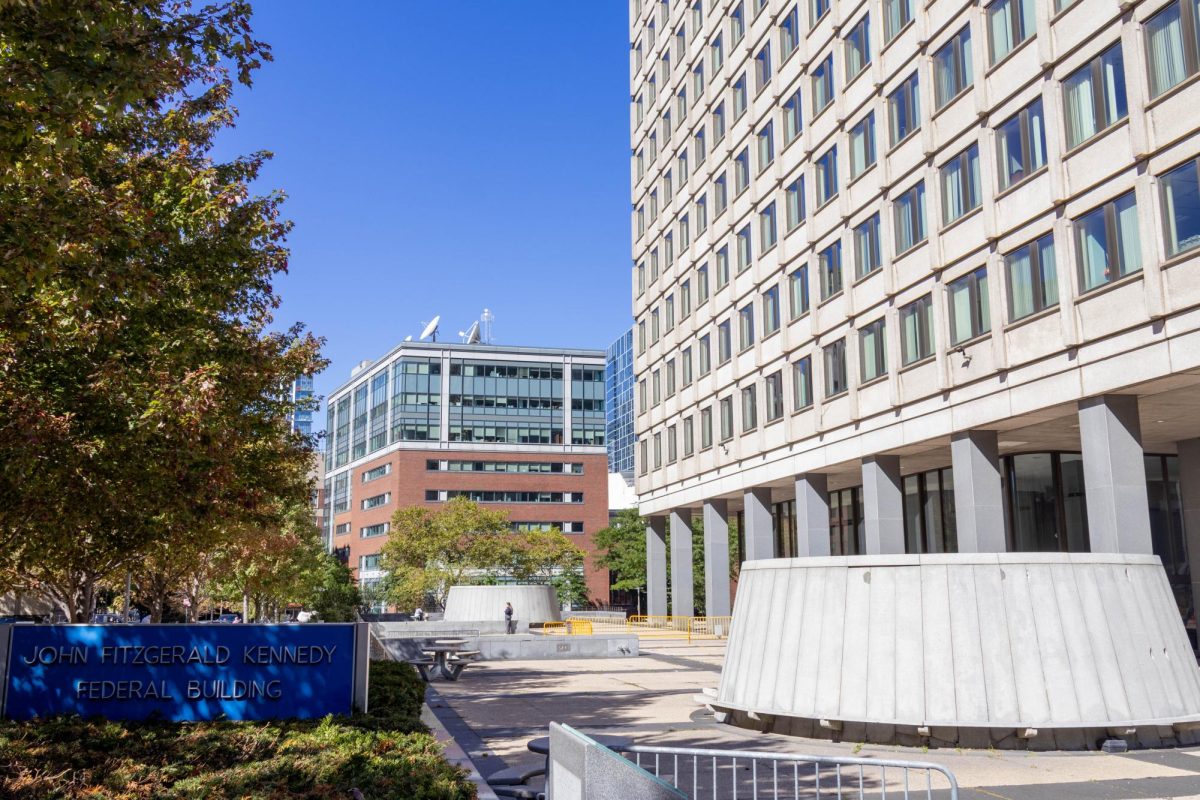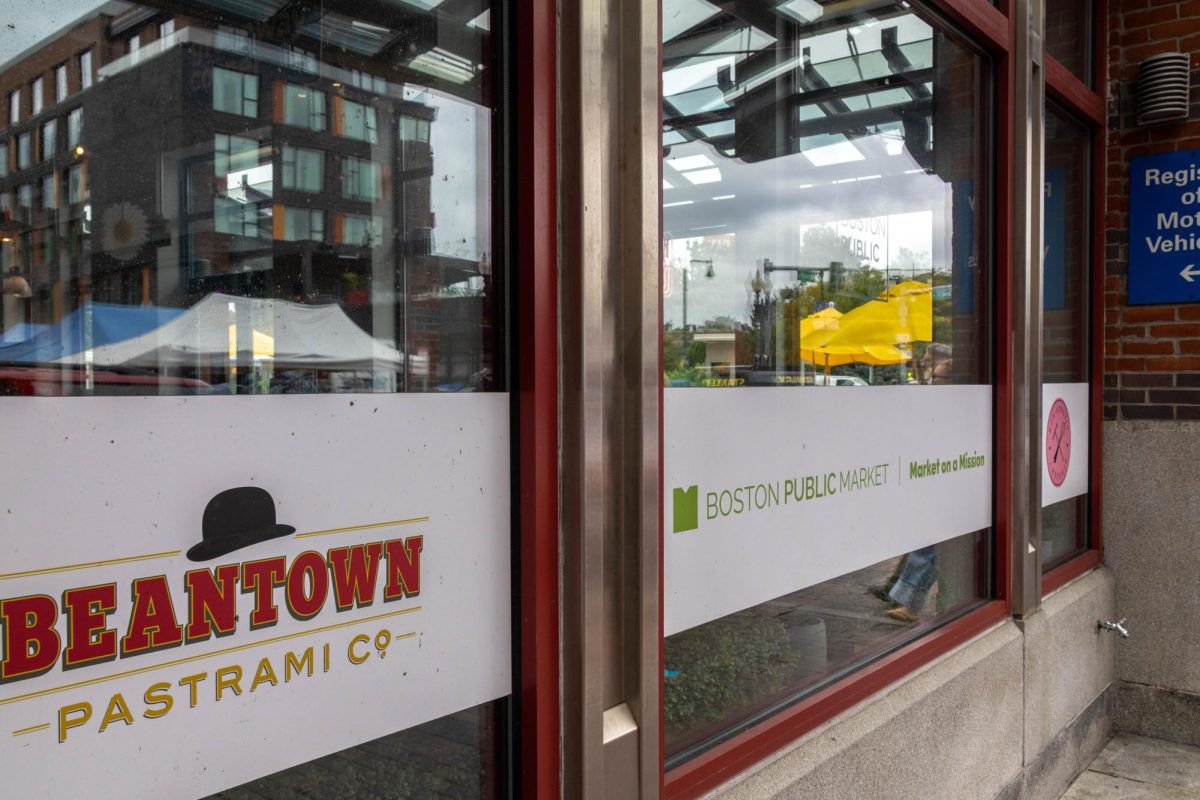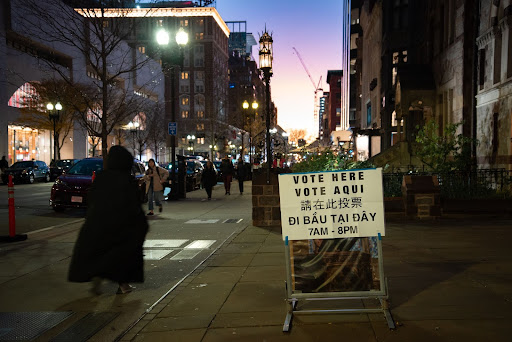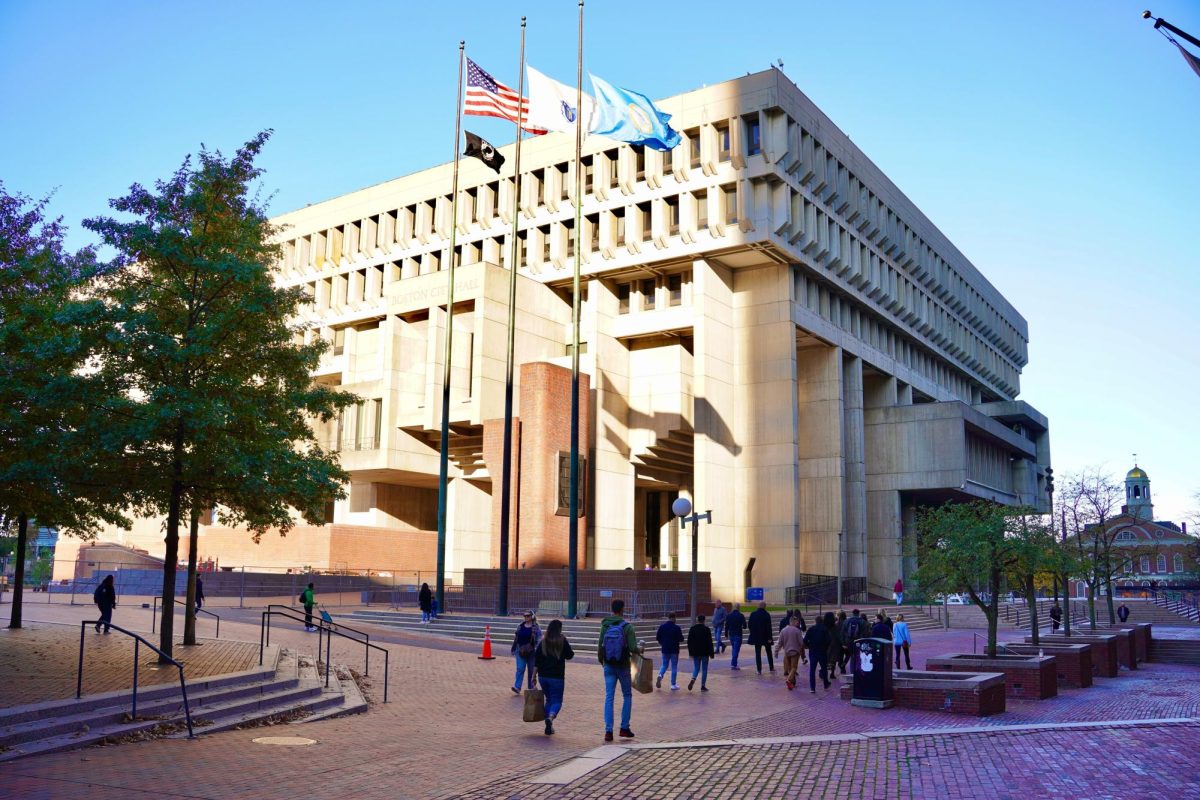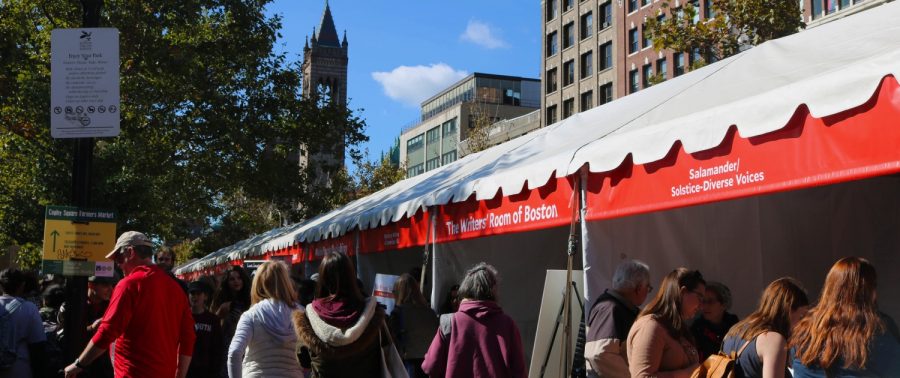Boston is now part of a growing number of cities with recurring public art festivals, joining the ranks of St. Louis, New Orleans and Palm Springs. Through a nonprofit called the Boston Public Art Triennial, newly commissioned art has been installed all across the city.
Johane Alexis-Phanor, a current Mattapan resident and social impact fundraising strategist who served as a bridge between the festival organizers and Mattapan, said that “art can be used as a way to heal, as a way to enliven a neighborhood, and as a way to build community.”
In the year leading up to the festival launch, “community captains” like Alexis-Phanor helped make sure that festival art was site-specific and reflected the neighborhoods it was placed in.
The Triennial’s artistic director Pedro Alonzo shared details via email about artists Lan Tuazon and Laura Lima, and why each artists’ work fit for a particular Mattapan location.
“Laura’s project,” Alonzo said, “was determined by the scope of her work. She wanted to create art for animals. We were looking for an urban wildlife sanctuary. Mass Audubon’s Boston Nature Center is the ideal location.”

Tuazon, meanwhile, “was looking for a site with deep ties to community,” he said. “Her work is a platform for engaging with the public about the use of materials and the myth of recycling. We love Hunt-Almont Park as a setting for this type of interaction.”
Both artists’ work is a testament to how the festival pieces are truly “site-specific” and were designed with the community in mind. With Tuazon’s work, that even means moving the art from its original location based on the neighborhood’s feedback.
Art festivals as community development
Mattapan’s community captains, Alexis-Phanor and Edosa Osemwegie, took part in an series of community feedback sessions over the past year to help prepare for the festival and give the curatorial team a sense of what the community was looking for.
That started with an intensive community listening process. The Triennial hired neighborhood liaisons from all of Boston’s communities to ensure that community feedback was part of the planning in the event’s earliest stages.
For Alexis-Phanor, the power of the arts in community development was a lesson learned early in life. She vividly remembers how, in the summer after 7th grade, she participated in her first public art project at the South Street Apartments in Jamaica Plain.
For her last few years, integrating arts and culture into community development has been a core focus of Alexis-Phanor’s work. She worked with Codman Square Neighborhood Development Corporation on their Talbot Norfolk Triangle (TNT) Eco-Innovation District, a sustainability project that, in its own words, created the first Eco-District in Boston.
A highlight of that project for her was a community-painted mural—part of the organization’s Slow Streets initiative to reduce car-related accidents and fatality in the neighborhood.
“What these street murals basically do,” Alexis-Phanor said, “is that when people are driving down the streets, it slows down traffic.”
Likewise, Alexis-Phanor said she’s seen how arts and culture can be helpful ways “to build a place.”
For example, at the corner of Washington and Bowdoin Street, one project involved painting the walls of an empty lot, bringing in chairs, planting a garden and hosting community and open mic nights.
Ultimately, she said the project made her realize “how important it is to integrate art into community development”—and how it can help turn an abandoned area into a site of connection.
Curating connection
Alexis-Phanor cited Mattapan’s ethnic diversity—including Caribbean and African heritage—and its open spaces as major community assets. Several green spaces intersect with Mattapan, including Mass Audubon’s Boston Nature Center, parts of the Lower Neponset River Trail and the Urban Farming Institute.
Alexis-Phanor leveraged her Mattapan connections to help the Triennial partner with several local organizations, she said, including the farming institute and the Mattapan Food and Fitness Coalition.
Lan Tuazon, whose work was installed at Almont Park, makes art that repurposes waste products and critiques over-consumption. Her Triennial art piece, “Matters of Consequence,” is an architectural structure that’s built to promote climate-consciousness, social connection and collective action. More than that, it was built for people to sit on and hang out in.
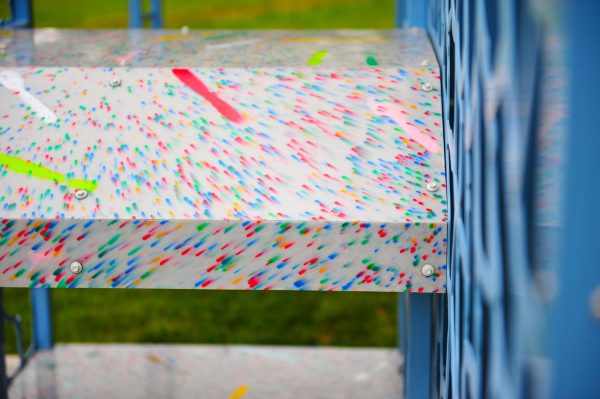
However, after being installed, members of the Mattapan community requested a change of location. Marguerite Wynter, a staffer for The Triennial, said, “We don’t have specifics to share at the moment” regarding the relocation.
“Collaboration is at the heart of the Triennial’s work,” the website for Tuazon says. “After receiving additional feedback from the Mattapan community, we will be relocating the installation currently installed at Almont Park. The Triennial is working closely with the City of Boston and the artist to identify a new location for the piece.”
Alexis-Phanor hopes The Triennial will serve to highlight Mattapan’s unique attributes.
“When I look at Mattapan, first and foremost,” she said, “I recognize the assets of the community. Ultimately, I’d like people to discover Mattapan.”


